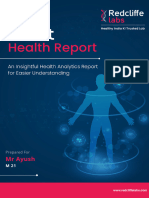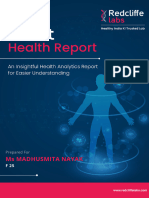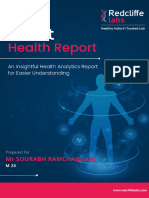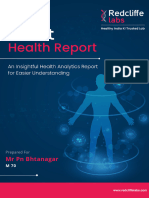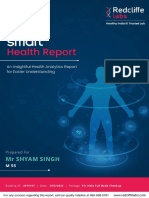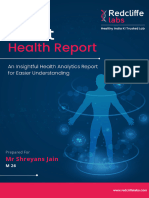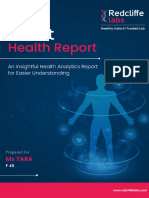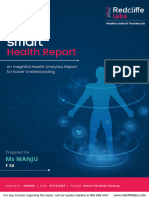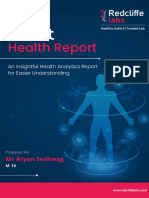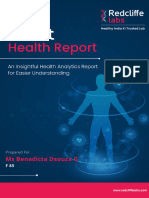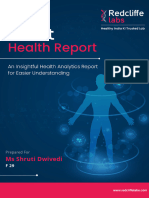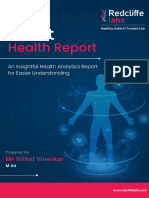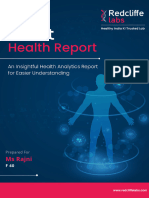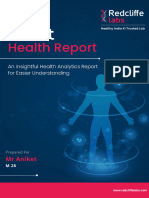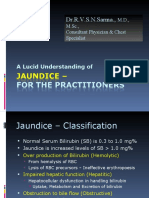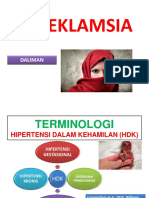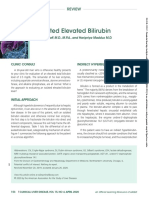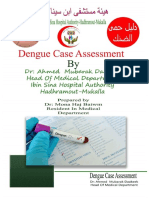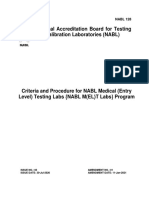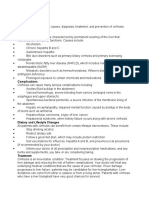Header
Header
Uploaded by
Ashish SaraswatCopyright:
Available Formats
Header
Header
Uploaded by
Ashish SaraswatOriginal Description:
Original Title
Copyright
Available Formats
Share this document
Did you find this document useful?
Is this content inappropriate?
Copyright:
Available Formats
Header
Header
Uploaded by
Ashish SaraswatCopyright:
Available Formats
Prepared For
Mr SAGAR SONI
M 22
Booking ID - 4013910 | Date - 6/05/2023 | Package -Vital Screening Package
fa lse
Name
Patient ID
Gender
Age
Mr SAGAR SONI 4013910 M 22
Health Summary
BLOOD COUNTS
Test Name Result
RBC count 5.6
Please Watchout
LIPID PROFILE
DIABETES MONITORING
Everything looks good
Everything looks good
KIDNEY PROFILE
LIVER PROFILE
Test Name Result
Test Name Result
Uric Acid 7.4
Indirect Bilirubin 1.3
Please Watchout
Total Bilirubin 1.8
Please Watchout
ANEMIA STUDIES
ELECTROLYTES
Test Name Result
Test Name Result
RDW-SD 44.2
Potassium 5.31
RDW-CV 14.7
Please Watchout
MCH 26.7
Please Watchout
MINERAL PROFILE
Everything looks good
Patient Name : Mr SAGAR SONI Bill Date : May 06, 2023, 09:08 AM
DOB/Age/Gender : 22 Y/Male Sample Collected : May 06, 2023, 09:08 AM
Patient ID / UHID : 4013910/OF4013910 Sample Received : May 06, 2023, 11:03 AM
Referred By : Dr.SELF Report Date : May 06, 2023, 11:56 AM
Sample Type : Whole blood EDTA Barcode No : HT451491
Client : JDN Health Care Report Status : Final Report
Test Description Value(s) Unit(s) Reference Range
HEMATOLOGY REPORT
Vital Screening Package
Complete Blood Count (CBC)
RBC PARAMETERS
Hemoglobin 14.9 g/dL 13.0 - 17.0
Method : colorimetric
RBC Count 5.6 10^6/µl 4.5 - 5.5
Method : Electrical impedance
PCV 46.5 % 40 - 50
Method : Calculated
MCV 83.2 fl 83 - 101
Method : Calculated
MCH 26.7 pg 27 - 32
Method : Calculated
MCHC 32.1 g/dL 31.5 - 34.5
Method : Calculated
RDW (CV) 14.7 % 11.6 - 14.0
Method : Calculated
RDW-SD 44.2 fl 35.1 - 43.9
Method : Calculated
WBC PARAMETERS
TLC 7.3 10^3/µl 4 - 10
Method : Electrical impedance and microscopy
DIFFERENTIAL LEUCOCYTE COUNT
Neutrophils 55 % 40-80
Lymphocytes 36 % 20-40
Monocytes 4.3 % 2-10
Eosinophils 4.6 % 1-6
Basophils 0.1 % <2
Absolute leukocyte counts
Method : Calculated
Neutrophils* 4.01 10^3/µl 2-7
Lymphocytes* 2.63 10^3/µl 1-3
Monocytes* 0.31 10^3/µl 0.2 - 1.0
Eosinophils* 0.34 10^3/µl 0.02 - 0.5
Basophils* 0.01 10^3/µl 0.02 - 0.5
PLATELET PARAMETERS
Platelet Count 162 10^3/µl 150 - 410
Method : Electrical impedance and microscopy
Mean Platelet Volume (MPV) 14.1 fL 9.3 - 12.1
06-May-2023 02:06 PM Page 1 of 10
Patient Name : Mr SAGAR SONI Bill Date : May 06, 2023, 09:08 AM
DOB/Age/Gender : 22 Y/Male Sample Collected : May 06, 2023, 09:08 AM
Patient ID / UHID : 4013910/OF4013910 Sample Received : May 06, 2023, 11:03 AM
Referred By : Dr.SELF Report Date : May 06, 2023, 11:56 AM
Sample Type : Whole blood EDTA Barcode No : HT451491
Client : JDN Health Care Report Status : Final Report
Test Description Value(s) Unit(s) Reference Range
Method : Calculated
PCT 0.2 % 0.17 - 0.32
Method : Calculated
PDW 15.4 fL 8.3 - 25.0
Method : Calculated
P-LCR 56.2 % 18 - 50
Method : Calculated
P-LCC 91 % 44 - 140
Method : Calculated
Mentzer Index 14.86 %
Method : Calculated
Interpretation:
CBC provides information about red cells, white cells and platelets. Results are useful in the diagnosis of anemia, infections, leukemias, clotting
disorders and many other medical conditions.
06-May-2023 02:06 PM Page 2 of 10
Patient Name : Mr SAGAR SONI Bill Date : May 06, 2023, 09:08 AM
DOB/Age/Gender : 22 Y/Male Sample Collected : May 06, 2023, 09:08 AM
Patient ID / UHID : 4013910/OF4013910 Sample Received : May 06, 2023, 11:03 AM
Referred By : Dr.SELF Report Date : May 06, 2023, 02:08 PM
Sample Type : Whole blood EDTA Barcode No : HT451491
Client : JDN Health Care Report Status : Final Report
Test Description Value(s) Unit(s) Reference Range
HEMATOLOGY REPORT
Vital Screening Package
Erythrocyte Sedimentation Rate (ESR)
ESR - Erythrocyte Sedimentation Rate 12 mm/hr 0 - 10
Method : MODIFIED WESTERGREN
Interpretation:
Indicates presence and intensity of an inflammatory process; never diagnostic of a specific disease. ESR is increased in chronic inflammatory
diseases, especially collagen and vascular diseases. Decreased ESR is seen in congestive heart failure, cachexia and after high dose of adrenal
steroids.
06-May-2023 02:06 PM Page 3 of 10
Patient Name : Mr SAGAR SONI Bill Date : May 06, 2023, 09:08 AM
DOB/Age/Gender : 22 Y/Male Sample Collected : May 06, 2023, 09:08 AM
Patient ID / UHID : 4013910/OF4013910 Sample Received : May 06, 2023, 11:03 AM
Referred By : Dr.SELF Report Date : May 06, 2023, 12:04 PM
Sample Type : Serum Barcode No : BT057542
Client : JDN Health Care Report Status : Final Report
Test Description Value(s) Unit(s) Reference Range
BIOCHEMISTRY REPORT
Vital Screening Package
Liver Function Test (LFT)
BILIRUBIN TOTAL 1.8 mg/dL 0.2 - 1.2
Method : Photometric
BILIRUBIN DIRECT 0.5 mg/dL 0.0 - 0.5
Method : Diazo Reaction
BILIRUBIN INDIRECT 1.3 mg/dL 0.1 - 1.0
Method : Calculation (T Bil - D Bil)
SGOT/AST 27 U/L 5 - 34
Method : IFCC without P5P
SGPT/ALT 26 U/L 0 to 55
Method : IFCC without P5P
SGOT/SGPT Ratio 1.04 - -
ALKALINE PHOSPHATASE 87 U/L 40 - 150
Method : IFCC
TOTAL PROTEIN 7.5 g/dL 6.4 - 8.3
Method : Biuret
ALBUMIN 4.9 gm/dL 3.8 - 5.0
Method : BCG
GLOBULIN 2.6 g/dL 2.3 - 3.5
Method : Calculation (T.P - Albumin)
ALBUMIN : GLOBULIN RATIO 1.88 - 1.0 - 2.1
Method : Calculation (Albumin/Globulin)
GAMMA GLUTAMYL TRANSFERASE (GGT) 16 U/L 12 - 64
Method : Photometric
Interpretation:
The liver filters and processes blood as it circulates through the body. It metabolizes nutrients, detoxifies harmful substances, makes blood clotting proteins, and
performs many other vital functions. The cells in the liver contain proteins called enzymes that drive these chemical reactions. When liver cells are damaged or
destroyed, the enzymes in the cells leak out into the blood, where they can be measured by blood tests Liver tests check the blood for two main liver enzymes. Aspartate
aminotransferase (AST),SGOT: The AST enzyme is also found in muscles and many other tissues besides the liver. Alanine aminotransferase (ALT), SGPT: ALT is
almost exclusively found in the liver. If ALT and AST are found together in elevated amounts in the blood, liver damage is most likely present. Alkaline Phosphatase
and GGT: Another of the liver's key functions is the production of bile, which helps digest fat. Bile flows through the liver in a system of small tubes (ducts), and is
eventually stored in the gallbladder, under the liver. When bile flow is slow or blocked, blood levels of certain liver enzymes rise: Alkaline phosphatase Gamma-utamyl
transpeptidase (GGT) Liver tests may check for any or all of these enzymes in the blood. Alkaline phosphatase is by far the most commonly tested of the three. If
alkaline phosphatase and GGT are elevated, a problem with bile flow is most likely present. Bile flow problems can be due to a problem in the liver, the gallbladder, or
the tubes connecting them. Proteins are important building blocks of all cells and tissues. Proteins are necessary for your body's growth, development, and health. Blood
contains two classes of protein, albumin and globulin. Albumin proteins keep fluid from leaking out of blood vessels. Globulin proteins play an important role in your
immune system. Low total protein may indicate: 1.bleeding 2.liver disorder 3.malnutrition 4.agammaglobulinemia High Protein levels 'Hyperproteinemia: May be seen
in dehydration due to inadequate water intake or to excessive water loss (eg, severe vomiting, diarrhea, Addison's disease and diabetic acidosis) or as a result of increased
production of proteins Low albumin levels may be caused by: 1.A poor diet (malnutrition). 2.Kidney disease. 3.Liver disease. High albumin levels may be caused by:
Severe dehydration.
06-May-2023 02:06 PM Page 4 of 10
Patient Name : Mr SAGAR SONI Bill Date : May 06, 2023, 09:08 AM
DOB/Age/Gender : 22 Y/Male Sample Collected : May 06, 2023, 09:08 AM
Patient ID / UHID : 4013910/OF4013910 Sample Received : May 06, 2023, 11:03 AM
Referred By : Dr.SELF Report Date : May 06, 2023, 12:04 PM
Sample Type : Serum Barcode No : BT057542
Client : JDN Health Care Report Status : Final Report
Test Description Value(s) Unit(s) Reference Range
BIOCHEMISTRY REPORT
Vital Screening Package
Kidney Function Test (KFT)
BLOOD UREA 37 mg/dL 19 - 44.1
Method : Urease
CREATININE 1.09 mg/dL 0.72 - 1.25
Method : Photometric
BUN 17.29 mg/dL 8.9 - 20.6
Method : Urease
BUN/CREATININE RATIO 15.86
UREA / CREATININE RATIO 33.94
URIC ACID 7.4 mg/dL 3.5 - 7.2
Method : Uricase
CALCIUM Serum 9.6 mg/dL 8.4 - 10.2
Method : Arsenazo III
PHOSPHORUS 4.7 mg/dL 2.3 - 4.7
Method : Photometric
SODIUM 141.6 mmol/L 136 - 145
Method : Potentiometric
POTASSIUM 5.31 mmol/L 3.5 - 5.1
Method : Potentiometric
CHLORIDE 105.4 mmol/L 98 - 107
Method : Photometric
Interpretation:
SUMMARY:-
Kidney function tests is a collective term for a variety of individual tests and proceduresthat can be done toevaluate how well the kidneys are functioning.Many
conditions can affect the ability of the kidneys to carryout their vital functions. Somelead to a rapid (acute) decline in kidney functionothers lead to a gradual
(chronic) declineinfunction. Both result in a buildup of toxic waste subst done on urine samples, as well as on blood samples.A number of symptoms may indicate
a problem with your kidneys. These include : high blood pressure,blood in urine frequent urges to urinate,difficulty beginning urination,painful urination,swelling in
the hands and feet due to a buildup of fluids in the body. A single symptom may not mean something serious. However, when occurring simultaneously, these
symptoms suggest that your kidneys are not working properly. Kidney function tests can help determine the reason. Electrolytes (sodium,potassium,and chloride)
are present in the human body and the balancing act of the electrolytes in our bodies is essential for normal function of our cells and organs. There has to be a
balance.Ionized calcium this test if you have signs of kidney or parathyroid disease. The test may also be done to monitor progress and treatment of these
diseases.
06-May-2023 02:06 PM Page 5 of 10
Patient Name : Mr SAGAR SONI Bill Date : May 06, 2023, 09:08 AM
DOB/Age/Gender : 22 Y/Male Sample Collected : May 06, 2023, 09:08 AM
Patient ID / UHID : 4013910/OF4013910 Sample Received : May 06, 2023, 11:03 AM
Referred By : Dr.SELF Report Date : May 06, 2023, 12:04 PM
Sample Type : Serum Barcode No : BT057542
Client : JDN Health Care Report Status : Final Report
Test Description Value(s) Unit(s) Reference Range
BIOCHEMISTRY REPORT
Vital Screening Package
Lipid Profile
TOTAL CHOLESTEROL 151 mg/dL Desirable : <200
Method : Enzymatic - Cholesterol Oxidase Borderline : 200-239
High : >240
TRIGLYCERIDES 100 mg/dL Normal : <150
Method : Colorimetric - Lip/Glycerol Kinase Borderline : 150-199
High : 200-499
Very high : >500
HDL CHOLESTEROL 41 mg/dL >40
Method : Accelerator Selective Detergent
NON HDL CHOLESTEROL 110 mg/dL <130
Method : Calculated
LDL CHOLESTEROL 90 mg/dL Optimal <100
Method : Calculated Near optimal/above optimal
100-129 Borderline high
130-159
High 160-189
Very high >190
V.L.D.L CHOLESTEROL 20 mg/dL < 30
Method : Calculated
CHOL/HDL Ratio 3.68 - 3.5 - 5.0
Method : Calculated
HDL/ LDL RATIO 0.46 - Desirable : 0.5 - 3.0
Method : Calculated Borderline : 3.1 - 6.0
High : > 6.0
LDL/HDL Ratio 2.2 -
Method : Calculated
Interpretation:
Lipid level assessments must be made following 9 to 12 hours of fasting, otherwise assay results might lead to erroneous interpretation. NCEP recommends of 3 different samples to be drawn at intervals of 1 week
for harmonizing biological variables that might be encountered in single assays.
NATIONAL LIPID ASSOCIATION TOTAL CHOLESTEROL TRIGLYCERIDE in LDL CHOLESTEROL in NON HDL CHOLESTEROL
RECOMMENDATIONS (NLA-2014) in mg/dL mg/dL mg/dL in mg/dL
Optimal <200 <150 <100 <130
Above Optimal 100-129 130 - 159
Borderline High 200-239 150-199 130-159 160 - 189
High >=240 200-499 160-189 190 - 219
Very High - >=500 >=190 >=220
06-May-2023 02:06 PM Page 6 of 10
Patient Name : Mr SAGAR SONI Bill Date : May 06, 2023, 09:08 AM
DOB/Age/Gender : 22 Y/Male Sample Collected : May 06, 2023, 09:08 AM
Patient ID / UHID : 4013910/OF4013910 Sample Received : May 06, 2023, 11:03 AM
Referred By : Dr.SELF Report Date : May 06, 2023, 12:04 PM
Sample Type : Serum Barcode No : BT057542
Client : JDN Health Care Report Status : Final Report
Test Description Value(s) Unit(s) Reference Range
06-May-2023 02:06 PM Page 7 of 10
Patient Name : Mr SAGAR SONI Bill Date : May 06, 2023, 09:08 AM
DOB/Age/Gender : 22 Y/Male Sample Collected : May 06, 2023, 09:08 AM
Patient ID / UHID : 4013910/OF4013910 Sample Received : May 06, 2023, 11:03 AM
Referred By : Dr.SELF Report Date : May 06, 2023, 01:50 PM
Sample Type : Serum Barcode No : SI143915
Client : JDN Health Care Report Status : Final Report
Test Description Value(s) Unit(s) Reference Range
SEROLOGY AND IMMUNOLOGY REPORT
VDRL
SYPHILIS RAPID TEST NON REACTIVE - NON REACTIVE
Method : RAPID CHROMATOGRAPHIC IMMUNOASSAY
Interpretation:
RESULTS REMARKS
Indicates presence of IgM & IgG antibodies against Treponemal
Reactive
Pallidum antigens
Non Indicates absence of IgM & IgG antibodies against Treponemal
Reactive Pallidum antigens
Note
1. Positive result indicates ongoing or recent infection and the diagnosis should be confirmed by specific Treponemal tests such as TPHA & FTA-
AbS.
2. The reactivity will vary with Primary (60-86%), Secondary (99%) and Tertiary (98%) stage of Syphilis.
3. False positive results may be observed in patients of Malaria, Hepatitis, Mumps, Leprosy, Infectious Mononucleosis, Rheumatoid Arthritis and
Collagen disease.
4. False negative reaction may be due to processing of sample collected early in the course of disease, immunosuppression and due to prozone
effect.
5. Test conducted on serum.
6. It is a qualitative test.
Uses
To screen for presence of Syphilis infection.
06-May-2023 02:06 PM Page 8 of 10
Patient Name : Mr SAGAR SONI Bill Date : May 06, 2023, 09:08 AM
DOB/Age/Gender : 22 Y/Male Sample Collected : May 06, 2023, 09:08 AM
Patient ID / UHID : 4013910/OF4013910 Sample Received : May 06, 2023, 11:03 AM
Referred By : Dr.SELF Report Date : May 06, 2023, 01:49 PM
Sample Type : Spot Urine Barcode No : CI195081
Client : JDN Health Care Report Status : Final Report
Test Description Value(s) Unit(s) Reference Range
CLINICAL PATHOLOGY REPORT
Vital Screening Package
Urine Routine and Microscopic Examination
PHYSICAL EXAMINATON
Volume 20 ml
Colour Pale yellow Pale yellow
Transparency Clear Clear
Deposit Absent Absent
CHEMICAL EXAMINATION
Reaction (pH) 6.0 4.5 - 8.0
Method : Double Indicator
Specific Gravity 1.005 1.010 - 1.030
Method : Ion Exchange
Urine Glucose (sugar) Negative Negative
Method : Oxidase / Peroxidase
Urine Protein (Albumin) Negative Negative
Method : Acid / Base Colour Exchange
Urine Ketones (Acetone) Negative Negative
Method : Legals Test
Blood Negative Negative
Method : Peroxidase Hemoglobin
Leucocyte esterase Negative Negative
Method : Enzymatic Reaction
Bilirubin Urine Negative Negative
Method : Coupling reaction
Nitrite Negative Negative
Method : Griless Test
Urobilinogen Normal Normal
Method : Ehrlichs Test
MICROSCOPIC EXAMINATION
Method : Microscopy
Pus Cells (WBCs) 3-4 /hpf 0-5
Epithelial Cells 1-2 /hpf 0-4
Red blood Cells Absent /hpf Absent
Crystals Absent Absent
Cast Absent Absent
Yeast Cells Absent Absent
Amorphous deposits Absent Absent
Bacteria Absent Absent
Protozoa Absent Absent
06-May-2023 02:06 PM Page 9 of 10
Patient Name : Mr SAGAR SONI Bill Date : May 06, 2023, 09:08 AM
DOB/Age/Gender : 22 Y/Male Sample Collected : May 06, 2023, 09:08 AM
Patient ID / UHID : 4013910/OF4013910 Sample Received : May 06, 2023, 11:03 AM
Referred By : Dr.SELF Report Date : May 06, 2023, 01:49 PM
Sample Type : Spot Urine Barcode No : CI195081
Client : JDN Health Care Report Status : Final Report
Test Description Value(s) Unit(s) Reference Range
06-May-2023 02:06 PM Page 10 of 10
Name
Patient ID
Gender
Age
fa lse
Mr SAGAR SONI 4013910 M 22
Health Advisory
Normal (N) Low (L) Borderline (BL) High (H)
Kidney Profile
This panel is used to check healthy functioning of your kidneys. Kidneys filter blood in your body to remove waste
products - these waste products are produced when breakdown of proteins (present in food, muscles and other
cells) occurs in the body to generate energy
Uric Acid: 7.4 mg/dL
HIGH
LOW NORMAL HIGH
< 3.5 3.5-7.2 > 7.2
You: 7.4
Common reasons for abnormal results :
High protein diet Alcohol, high fat dairy, fast foods
Crash diet/over fasting. Certain Medicines.
+ +
SMART HEALTH REPORT
RT
MC-5280
About Redcliffe Labs
We
Weare
are
India’s
India’sMost
Most Trusted
Trusted &&Fastest
FastestGrowing
GrowingNetwork
Networkof Diagnostic
of Diagnostics
Centres
Labs
Best Customer Quality Commitment Affordable Prices
+
Experience With Accurate Reports With Quick Results
Commitment to excellence, Focus on quality with Value for money with
high end technology oriented staff accurate results quick turn around time (TAT)
Select from a wide range of
Full Body Health Check-up
packages that suits your health
Best Selling Package
Advance Full Body Check-up
Download our app & get
Free report consultation
A Simple and easy way to track your health
3500 + Tests & Packages Home Sample Collection or Visit
Nearest Collection Centre
Access Smart Reports Presence in 150+ Cities
You might also like
- Impaired Liver FunctionDocument2 pagesImpaired Liver FunctionLyka Mae Imbat - Pacnis90% (10)
- Laboratory Test Report: 3-6-16 & 17, Street No. 19, Himayatnagar, Hyderabad - 500 029Document8 pagesLaboratory Test Report: 3-6-16 & 17, Street No. 19, Himayatnagar, Hyderabad - 500 029Rubeena FatimaNo ratings yet
- HeaderDocument13 pagesHeadersh257275No ratings yet
- Jaya S Makwana-0931-11ee-9d54-000d3a3e1f69 - HeaderDocument25 pagesJaya S Makwana-0931-11ee-9d54-000d3a3e1f69 - Headerritik JaatNo ratings yet
- HeaderDocument18 pagesHeaderAlokNo ratings yet
- pDF20230623 Plain7e3fd5d6 11b5 11ee 9d54 000d3a3e1f69 Header - PDF 5Document17 pagespDF20230623 Plain7e3fd5d6 11b5 11ee 9d54 000d3a3e1f69 Header - PDF 5Sonal DhobleNo ratings yet
- HeaderDocument19 pagesHeaderAmit SurtiNo ratings yet
- Sample Report Redcliffe 001 Apr 06, 2023Document18 pagesSample Report Redcliffe 001 Apr 06, 2023wiserwaNo ratings yet
- Ms Samruddhi Mehta: Prepared ForDocument26 pagesMs Samruddhi Mehta: Prepared ForsamruddhinmehtaNo ratings yet
- HeaderDocument24 pagesHeadershafiquesk13579No ratings yet
- MR Ayush: Prepared ForDocument15 pagesMR Ayush: Prepared ForAyush GiriNo ratings yet
- Report 18 38Document22 pagesReport 18 38Abhisek PattnaikNo ratings yet
- HeaderDocument17 pagesHeaderSourabh BanerjeeNo ratings yet
- MR Sourabh RamchandaniDocument20 pagesMR Sourabh Ramchandanisourabhramchandani1997No ratings yet
- HeaderDocument17 pagesHeadernamratashahi0727No ratings yet
- HeaderDocument17 pagesHeaderSachin ChaudharyNo ratings yet
- HeaderDocument28 pagesHeaderVenkat VNo ratings yet
- Dengue BT ShubhamDocument18 pagesDengue BT ShubhamDevansh SinghNo ratings yet
- Header-8Document12 pagesHeader-8Nishant ShekharNo ratings yet
- Header-1Document21 pagesHeader-1Pragati BhatnagarNo ratings yet
- ReportDocument16 pagesReportvishutathaghatNo ratings yet
- Amaan ReportttDocument27 pagesAmaan ReportttAman Ur RehmanNo ratings yet
- HeaderDocument17 pagesHeaderDivyansh SengarNo ratings yet
- HeaderDocument20 pagesHeaderHR DMLgroupNo ratings yet
- Sushmita Sen-27Document15 pagesSushmita Sen-27Rishi RanjanNo ratings yet
- HeaderDocument30 pagesHeaderShreyans JainNo ratings yet
- Tara 45Document12 pagesTara 45rk41001No ratings yet
- Report (4) Medical CBCDocument25 pagesReport (4) Medical CBCSwapnil ShirkeNo ratings yet
- HeaderDocument28 pagesHeaderabcNo ratings yet
- Manju 58Document15 pagesManju 58rk41001No ratings yet
- Suresh HealthReport 27102022Document22 pagesSuresh HealthReport 27102022sureshbabupuli_24No ratings yet
- Ashok Health ReportDocument21 pagesAshok Health ReportAnup SinhaNo ratings yet
- HeaderDocument17 pagesHeaderrahulNo ratings yet
- Header-1Document26 pagesHeader-1Nishant ShekharNo ratings yet
- Aryan Seahwag 16Document24 pagesAryan Seahwag 16tarun sharmaNo ratings yet
- 21bf5a12-df9b-11ee-96b7-7c1e520e223c_HeaderDocument15 pages21bf5a12-df9b-11ee-96b7-7c1e520e223c_Headerabhi512.amNo ratings yet
- ReportDocument19 pagesReportyerrolla sharonpriyankaNo ratings yet
- HeaderDocument28 pagesHeaderAdarsh SinghNo ratings yet
- HeaderDocument18 pagesHeaderPrachi PandayNo ratings yet
- HeaderDocument24 pagesHeaderrenaldcollinNo ratings yet
- ReportDocument20 pagesReportrbrwwbmsbyNo ratings yet
- ReportDocument22 pagesReportAnurag ChaturvediNo ratings yet
- Report For ProjectDocument26 pagesReport For ProjectSwapnil ShirkeNo ratings yet
- a263dca4-95d4-11ef-aa59-42010a140030_HeaderDocument25 pagesa263dca4-95d4-11ef-aa59-42010a140030_Headerchat2shreyanshiNo ratings yet
- HeaderDocument32 pagesHeaderndaa123323No ratings yet
- ReportDocument21 pagesReportaryancradlesNo ratings yet
- HeaderDocument23 pagesHeaderMayank KesharwaniNo ratings yet
- Aryan Rathi MedicalDocument3 pagesAryan Rathi Medicalkueff866rkNo ratings yet
- Aniket Full BodyDocument23 pagesAniket Full Bodyaniketbhai111No ratings yet
- reportPDF20240610 Plain2f8487df 2705 11ef 8f2c 7c1e520e223c Header - PDFX Amz Algorithm AWDocument20 pagesreportPDF20240610 Plain2f8487df 2705 11ef 8f2c 7c1e520e223c Header - PDFX Amz Algorithm AWAjAy SaiNo ratings yet
- HeaderDocument26 pagesHeaderSubhra pattnaikNo ratings yet
- Ms Taranum Jabbar: Prepared ForDocument16 pagesMs Taranum Jabbar: Prepared ForTaranum KausarNo ratings yet
- 0064b560-f0e1-11ee-be5a-7c1e520e223c_HeaderDocument25 pages0064b560-f0e1-11ee-be5a-7c1e520e223c_HeaderAhahahNo ratings yet
- Header-1Document38 pagesHeader-1Elipanto CorvantoNo ratings yet
- ReportDocument26 pagesReportrajuNo ratings yet
- HeaderDocument16 pagesHeaderAmit kumarNo ratings yet
- HeaderDocument23 pagesHeaderMan ModiNo ratings yet
- HeaderDocument17 pagesHeadershyam kumarNo ratings yet
- CBC Full ReportDocument34 pagesCBC Full ReportRajan Don GuptaNo ratings yet
- HeaderDocument26 pagesHeaderSunny BhasalNo ratings yet
- 0064b560-f0e1-11ee-be5a-7c1e520e223c_HeaderDocument27 pages0064b560-f0e1-11ee-be5a-7c1e520e223c_HeaderAhahahNo ratings yet
- PDF TextDocument8 pagesPDF TextAsha SapraNo ratings yet
- InformaciónDocument14 pagesInformaciónAlondraNo ratings yet
- Concepts of Jaundice by DR SarmaDocument53 pagesConcepts of Jaundice by DR SarmamainztreamNo ratings yet
- Websys PDFDocument3 pagesWebsys PDFMayande SakatiNo ratings yet
- 1-Glucose - Postprandial YOGESHDocument19 pages1-Glucose - Postprandial YOGESHMeet PatelNo ratings yet
- Prime Full Body Check-Up: Test Description Value(s) Unit(s) Reference RangeDocument10 pagesPrime Full Body Check-Up: Test Description Value(s) Unit(s) Reference RangeNarendra KumarNo ratings yet
- Jurnal 3Document9 pagesJurnal 3CASEY VIRA APRILLEANo ratings yet
- Preeklamsia Amp - dm18Document32 pagesPreeklamsia Amp - dm18Noni Minty BelantricNo ratings yet
- Isolated Elevated BilirubinDocument4 pagesIsolated Elevated BilirubinRajabu KhalidNo ratings yet
- Clinical CaseDocument17 pagesClinical CaseDev ROYNo ratings yet
- Practice OSCEDocument48 pagesPractice OSCEmystatNo ratings yet
- Effect of Immunozin On Sickle Cell Disease in Sub Saharan Africa A Pilot StudyDocument11 pagesEffect of Immunozin On Sickle Cell Disease in Sub Saharan Africa A Pilot StudymohammedNo ratings yet
- Extracted Pages From Arneson - Clinical Chemistry-A LaboratDocument6 pagesExtracted Pages From Arneson - Clinical Chemistry-A Laboratastri yul fitrianaNo ratings yet
- Prescribing Information Abiratred Abiraterone Acetate Tablets 250 MGDocument9 pagesPrescribing Information Abiratred Abiraterone Acetate Tablets 250 MGChrisNo ratings yet
- Himanshu EdtedDocument6 pagesHimanshu Edteddevender0yadavNo ratings yet
- Denamarin Chewable TabletsDocument5 pagesDenamarin Chewable Tabletsabhijit_gothoskar6039No ratings yet
- BP2023021645715 PDFDocument5 pagesBP2023021645715 PDFzena carterNo ratings yet
- 12 Clinical Pathology of The FoalDocument29 pages12 Clinical Pathology of The FoalKatty ZanabriaNo ratings yet
- Pricelist AMSDocument1 pagePricelist AMSMimi AnugrahNo ratings yet
- Dengue Case AssessmentDocument14 pagesDengue Case Assessmentمنى حاج احمد50% (2)
- Liver Function Test: Presented By: Vikas Kumar JR-1Document19 pagesLiver Function Test: Presented By: Vikas Kumar JR-1vikasNo ratings yet
- Chronic Contitions ADocument39 pagesChronic Contitions AahmadranauiNo ratings yet
- CCR3-5-1210Document3 pagesCCR3-5-1210NovelNo ratings yet
- Important Instructions To Examiners:: Maharashtra State Board of Technical EducationDocument31 pagesImportant Instructions To Examiners:: Maharashtra State Board of Technical EducationAkshay SinghNo ratings yet
- Nabl 128Document13 pagesNabl 128Pawan MishraNo ratings yet
- Acute ColitisDocument8 pagesAcute ColitisKhurram NadeemNo ratings yet
- Cirrhosis Description Highlights Causes of CirrhosisDocument18 pagesCirrhosis Description Highlights Causes of Cirrhosisen-oleNo ratings yet
- Catabolism of HemeDocument4 pagesCatabolism of Hemeannun3650No ratings yet










